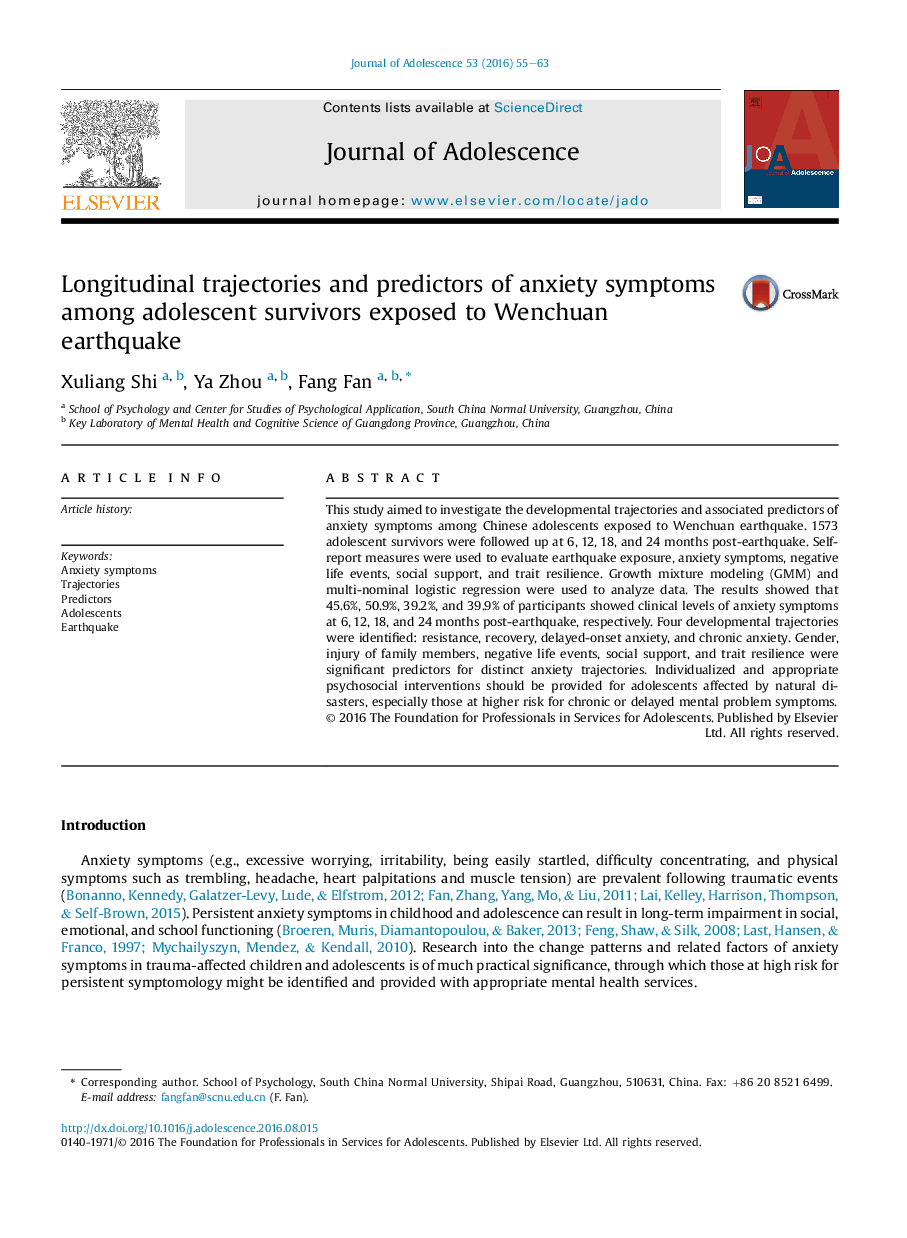| Article ID | Journal | Published Year | Pages | File Type |
|---|---|---|---|---|
| 5033882 | Journal of Adolescence | 2016 | 9 Pages |
Abstract
This study aimed to investigate the developmental trajectories and associated predictors of anxiety symptoms among Chinese adolescents exposed to Wenchuan earthquake. 1573 adolescent survivors were followed up at 6, 12, 18, and 24 months post-earthquake. Self-report measures were used to evaluate earthquake exposure, anxiety symptoms, negative life events, social support, and trait resilience. Growth mixture modeling (GMM) and multi-nominal logistic regression were used to analyze data. The results showed that 45.6%, 50.9%, 39.2%, and 39.9% of participants showed clinical levels of anxiety symptoms at 6, 12, 18, and 24 months post-earthquake, respectively. Four developmental trajectories were identified: resistance, recovery, delayed-onset anxiety, and chronic anxiety. Gender, injury of family members, negative life events, social support, and trait resilience were significant predictors for distinct anxiety trajectories. Individualized and appropriate psychosocial interventions should be provided for adolescents affected by natural disasters, especially those at higher risk for chronic or delayed mental problem symptoms.
Related Topics
Health Sciences
Medicine and Dentistry
Public Health and Health Policy
Authors
Xuliang Shi, Ya Zhou, Fang Fan,
